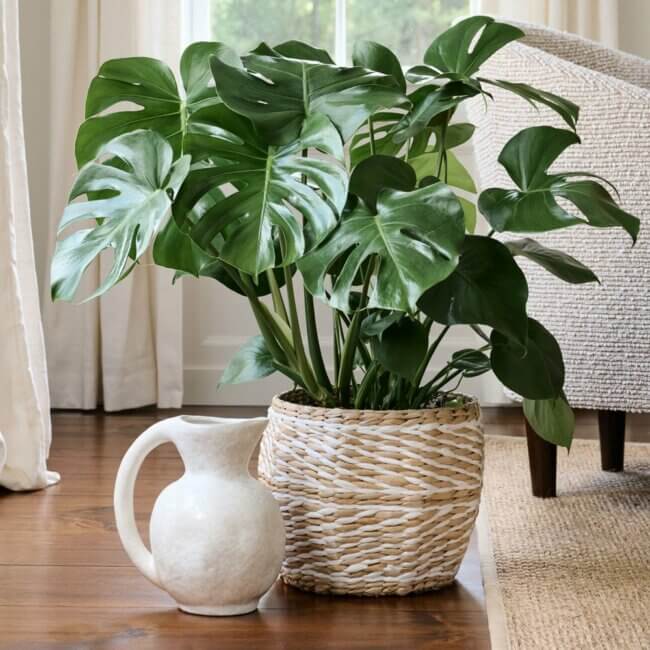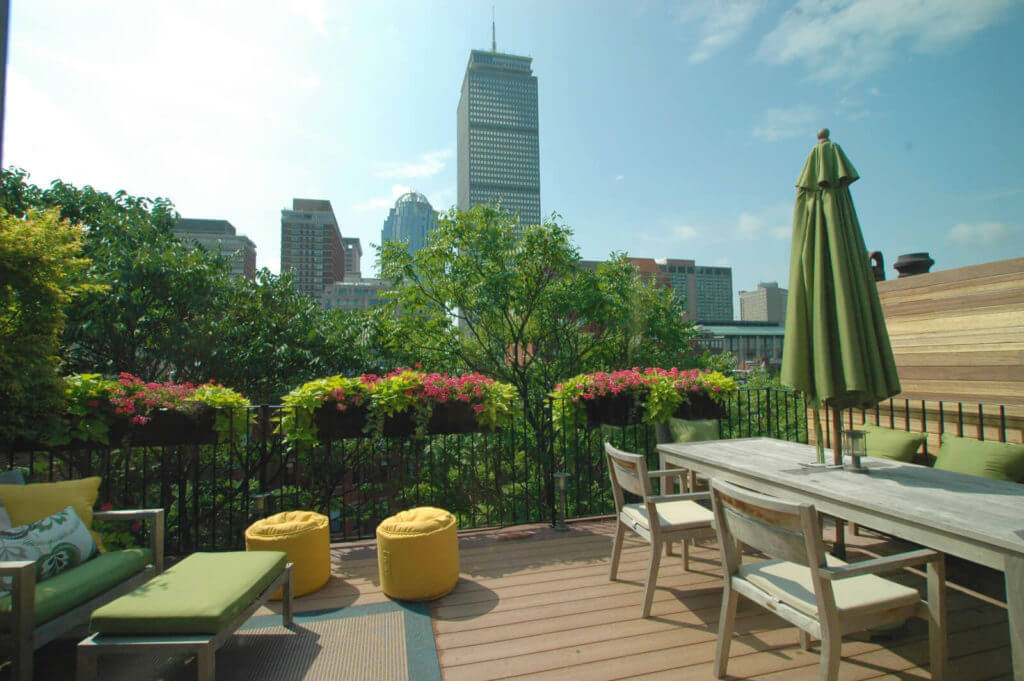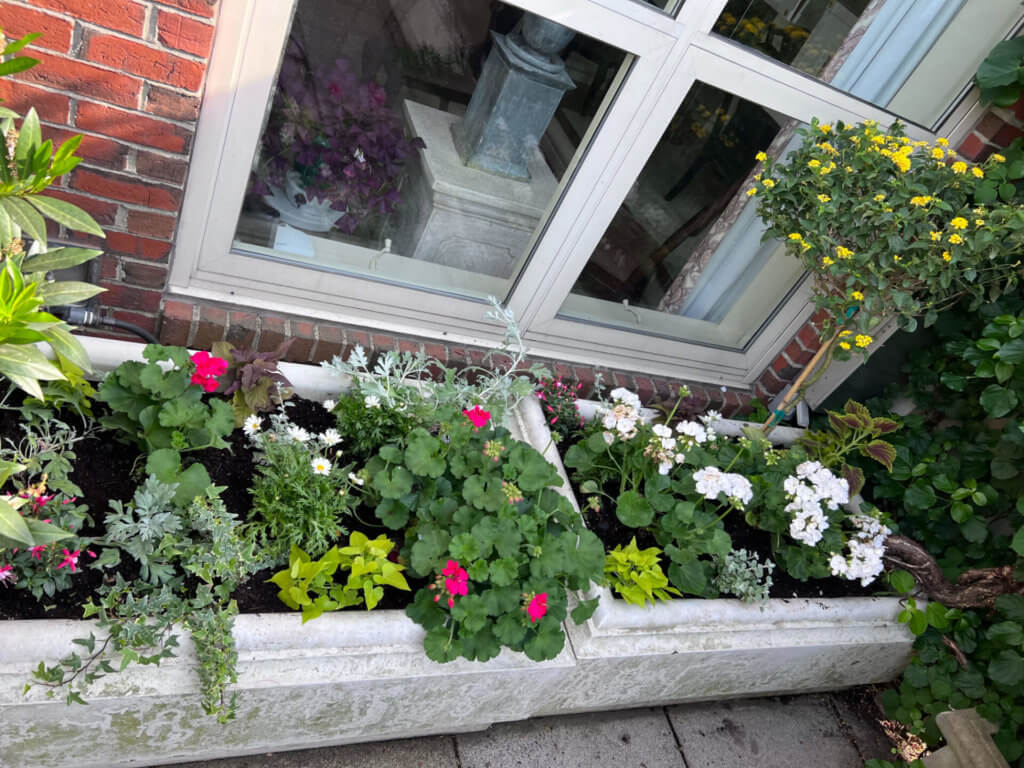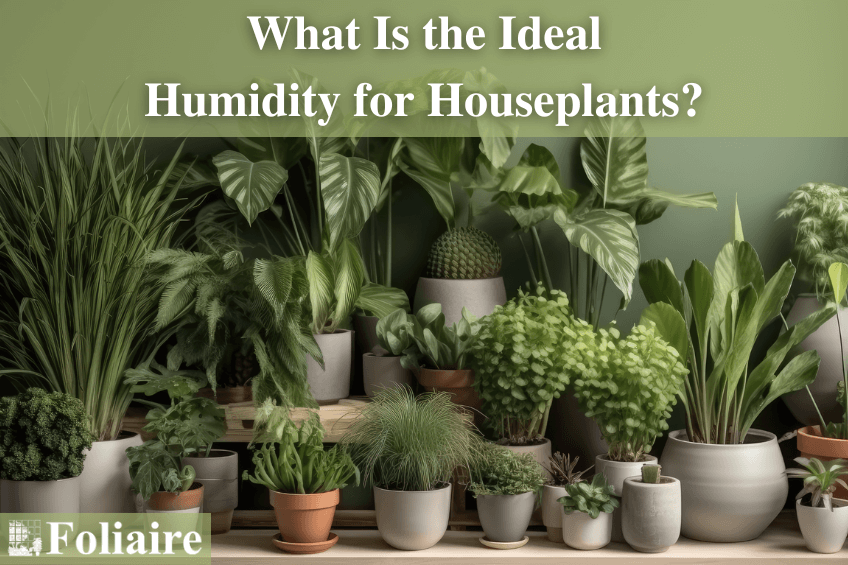What Is the Ideal Humidity for Houseplants?
Navigating the world of houseplants can be as rewarding as it is challenging, particularly when dealing with the whims of indoor climates. As the cold winter months take hold in regions like New England and the Midwest, understanding and maintaining the ideal humidity for houseplants becomes crucial. This season, characterized by biting cold and indoor heating, can create a less-than-ideal environment for your leafy companions.
In this blog, we’ll delve into the delicate balance of indoor humidity—a critical yet often overlooked factor in plant health and vitality. Whether you’re a seasoned plant parent or a greenery novice, mastering humidity levels is key to ensuring your indoor garden not only survives but thrives during the winter season and beyond. We’ll explore how factors like cold drafts and dry heat from space heaters or forced air systems can drastically alter the moisture levels in your home or office, posing unique challenges to plant care.
What We’ll Cover:
- Understanding humidity levels
- Tropical foliage
- Succulents and cacti
- Ferns
- Measuring and adjusting humidity
- Ways to improve humidity
- Winter-specific plant care tips
- Maintaining plant health all year
- Key takeaways
Understanding Humidity and Its Impact on Houseplants
Humidity, the invisible yet palpable presence of water in the air, plays a pivotal role in the well-being of houseplants. It’s a silent guardian of plant health, influencing everything from nutrient uptake to transpiration rates. In the natural habitat of many houseplants, particularly those originating from tropical climates, humidity levels are consistently high, creating an environment where plants thrive in the moisture-laden air. However, the controlled climates within our homes and offices often tell a different story, especially during winter.
As temperatures drop outside, heating systems spring to life inside, circulating warm but dry air throughout our living and working spaces. This artificial warmth, while comforting against the winter chill, can significantly reduce indoor humidity levels, sometimes dropping to levels far below what many houseplants would prefer. The disparity between the moisture in the soil and the dryness of the surrounding air can lead to a series of stress responses in plants, impacting their growth, appearance, and overall health.
Recognizing the signs of humidity stress is a vital skill in plant care. Symptoms of low humidity can manifest as brown, crispy leaf edges, slow growth, and an increased susceptibility to pests. Conversely, environments that are too humid for certain plants can encourage fungal growth and disease. Balancing this humidity level is, therefore, a dance of precision — one that harmonizes the needs of your plants with the capabilities of your indoor landscape design and the realities of your regional climate.
Ideal Humidity Levels for Common Houseplants
The quest for the perfect humidity level begins with the understanding that not all houseplants are created equal. Each species has its own set of preferences, especially when it comes to moisture in the air. Generally, most houseplants thrive in humidity levels ranging from 40% to 60%, mimicking the conditions of their native habitats. However, this range can vary, with tropical plants often favoring the higher end, while succulents and other arid-loving species thrive in lower humidity.
Let’s explore the ideal humidity levels for a few common houseplants, offering valuable plant care tips to help them flourish:
1) Tropical Foliage Plants (Monstera, Peace Lily, Philodendron)

These lush, leafy plants prefer higher humidity levels, usually between 60% and 80%. Their love for moisture makes them a vibrant addition to any indoor landscape design, especially in spaces where humidity can be closely monitored and maintained.
2) Succulents and Cacti (Aloe Vera, Jade Plant, Echeveria)

In stark contrast, these desert dwellers are accustomed to dry air and thrive in lower humidity environments, typically between 30% and 40%. Integrating these plants into your indoor landscape design can bring a touch of rugged beauty to your space, with a lower demand for atmospheric moisture.
3) Ferns (Boston Fern and Maidenhair Fern)

Ferns are humidity lovers and generally prefer an environment where humidity levels are between 40% and 60%. Their preference for moist air makes them a wonderful choice for bathrooms or kitchens, where humidity levels tend to be naturally higher.
Understanding and catering to the unique humidity requirements of your houseplants are crucial steps in ensuring their health and vitality. As you incorporate these plant care tips into your routine, you’ll find that managing humidity is not just about plant survival but about creating a lush, vibrant indoor ecosystem that reflects the diversity and resilience of nature itself.
3 Methods to Measure and Adjust Indoor Humidity
Maintaining the ideal humidity for your houseplants is a delicate balance crucial for promoting their health and vitality. Effective monitoring and adjustment strategies are key components of plant care tips and can significantly enhance your indoor landscape design. Here’s how you can measure and adjust indoor humidity levels effectively:
1) Measuring Humidity
Use a Hygrometer: This instrument measures the amount of moisture in the air, allowing you to monitor the humidity levels in your plant’s environment accurately. Digital hygrometers can provide instant readings and are a valuable tool in your plant care arsenal.
2) Increasing Humidity
Misting: Regularly misting your plants can increase the humidity around them, especially for tropical varieties that thrive in moist environments. However, ensure that this practice does not contribute to leaf wetness for prolonged periods, as it can encourage fungal diseases.
Pebble Trays: Place water-filled pebble trays near or under your plant containers. As the water evaporates, it increases the humidity around the plants.
Room Humidifiers: Installing a room humidifier can significantly improve the overall humidity levels, benefiting not just your plants but potentially your comfort during dry months.
3) Reducing Humidity
Dehumidifiers: If excess moisture is an issue, particularly in naturally damp areas of your home or during summer months, a dehumidifier can help maintain optimal humidity levels.
Improve Air Circulation: Use fans or open windows to improve air circulation. Proper airflow helps prevent the buildup of too much moisture around your plants.
Incorporating these methods into your plant care tips can drastically improve the living conditions of your houseplants. Regularly monitoring and adjusting humidity levels as part of your routine will ensure that your garden remains a lush, thriving environment for your botanical collection. It’s all about creating a harmonious balance that mimics the natural habitat of your plants, ensuring their growth and beauty throughout the year.
Do you need help expanding your garden?
3 Proven Ways to Improve Humidity for Your Plants
Integrating humidity considerations into your indoor landscape design is not just about plant survival; it’s about creating an aesthetically pleasing and healthy living space. Thoughtful placement of plants and the use of humidity-enhancing elements can elevate the look and feel of your indoor garden. Here’s how to harmonize humidity needs with design elements, ensuring your plants not only live but thrive:
1) Create Microclimates
Group Plants with Similar Humidity Needs: Cluster plants with similar humidity preferences together. This method not only creates a visual impact but also allows these plants to create a localized microclimate that meets their humidity needs.
Use Water Features: Incorporate small indoor water features, like tabletop fountains, to add moisture to the air and enhance the ambiance of your space.
2) Choose the Right Plants for Your Space
Assess the Humidity Levels: Understand the humidity dynamics of your space. High-humidity areas like bathrooms or kitchens can be great spots for humidity-loving plants. Meanwhile, arid areas might be more suitable for cacti or succulents.
Select Plants Based on Humidity Compatibility: Choose plant varieties that will not just survive but will complement each other in terms of their humidity requirements and aesthetic appeal. This thoughtful selection is key to a cohesive and sustainable indoor landscape design.
3) Utilize Humidity-Enhancing Decor
Decorative Humidifiers: Opt for humidifiers that blend in with your decor, providing the necessary moisture for your plants while adding a stylish touch to your interior.
Terrariums: Create mini ecosystems in terrariums for small, humidity-loving plants. These can be excellent focal points in your garden.
By considering humidity as an integral part of your indoor landscape design, you can create an environment where plants enhance the living space, not just with their visual beauty but also by contributing to a healthier and more comfortable indoor climate. These plant care tips ensure that every aspect of your plant parenting aligns with creating a harmonious and thriving indoor garden.

5 Winter-Specific Plant Care Tips
Winter brings unique challenges to indoor plant care, particularly in regions like New England and the Midwest, where the climate can be especially harsh. The cold, dry air outside and the dry heat inside can make maintaining the ideal humidity for your houseplants a delicate task. Here are some winter-specific plant care tips to help you navigate this season and ensure your indoor landscape design remains vibrant and your plants healthy:
1) Monitor Heating Sources
Be mindful of the placement of your plants in relation to heat sources like radiators, vents, and space heaters. Direct heat can dry out plants quickly. It’s crucial to maintain a safe distance to prevent moisture loss and leaf damage.
2) Maximize Light Exposure
With shorter days and less intense sunlight, maximize your plants’ exposure to natural light by placing them near windows or supplementing them with grow lights. Remember to clean the leaves and the windows to allow maximum light penetration.
3) Adjust Watering Routines
The reduced light and lower indoor humidity levels mean your plants will likely require less water. Monitor the soil moisture closely and adjust your watering schedule accordingly to prevent overwatering, which can lead to root rot, especially in colder months.
4) Increase Humidity Strategically
Use humidifiers, mist your plants, or employ pebble trays to increase the humidity around your plants. This step is particularly important for tropical plants that suffer in dry indoor air. However, ensure proper ventilation to prevent fungal issues.
5) Protect Plants from Cold Drafts
Shield your plants from cold drafts by ensuring windows are well-sealed. A sudden drop in temperature can be detrimental to your plants, potentially causing shock or leaf drop.
By implementing these plant care tips during the winter months, you can create a favorable environment that compensates for the season’s challenges. This proactive approach to winter care ensures your indoor landscape design remains a lush, tranquil retreat, offering a vibrant contrast to the starkness of the winter outside.
Get expert plant care tips today
5 Ways to Maintain Healthy Humidity Levels All Year
Cultivating a thriving indoor garden requires an understanding of how to maintain healthy humidity levels throughout the changing seasons. This balance is key to a vibrant indoor landscape design and is essential for the well-being of your plants. Here’s how you can ensure your plants receive the right amount of humidity all year round:
1) Regular Monitoring
Keep a close eye on the humidity levels in your plant areas. Use a hygrometer to provide accurate readings. Adjust your humidity strategies based on seasonal changes and the specific needs of your plants.
2) Seasonal Adjustments
Recognize that the needs of your plants may change with the seasons. In winter, you might need to increase humidity due to indoor heating, while in summer, ventilation and dehumidification might become more important.
3) Consistent Care Routine
Develop a consistent care routine that includes checking your plants for signs of humidity stress. Adjust your watering schedule, humidity levels, and plant placement as needed.

4) Ventilation and Air Circulation
Ensure there’s adequate air circulation around your plants to prevent the buildup of too much moisture. This potential oversight can lead to issues like mold and mildew. This ventilation is especially important in seasons with closed windows, where the air inside can become stagnant.
5) Embrace Technology
Consider investing in smart home devices like automated humidifiers or dehumidifiers that can maintain optimal conditions in your plant areas. These devices can take the guesswork out of maintaining the right environment for your plants.
By incorporating these practices into your plant care tips, you can create a stable and nurturing environment for your plants, regardless of the external weather conditions. Regularly adapting your indoor landscape design to meet the evolving needs of your plants ensures that your indoor garden remains a lush, healthful sanctuary throughout the year.
Key Takeaways
Understanding the ideal humidity for houseplants is essential during the challenging winter months. It’s crucial to recognize the unique humidity needs of different plants, with tropical varieties favoring higher humidity and succulents preferring dryer conditions. Observing your plants for signs of humidity distress, such as brown leaf tips or fungal growth, is key to providing the right care promptly.
A consistent care routine, including regular observation and adjustment, is vital for maintaining the perfect humidity balance for your plants. This proactive approach goes beyond ensuring plant health; it creates an aesthetically pleasing and nurturing living space. Each step contributes to a thriving indoor garden.
Contact us today for a free plantscaping consultation
View Our Other Plant Care Tips
For more guidance on creating the perfect environment for your houseplants or to explore more about indoor landscape design, visit Foliaire’s wealth of resources. Let us help you cultivate an indoor oasis that brings beauty, health, and well-being into your everyday life.
- Lawn and Garden
- Tropical Plants
- Ferns
- Philodendrons
- Fiddle Leaf Figs
- Why Are My House Plants Dying?
- How to Find the Best Garden Decor
- Top 10 Pet-Safe House Plants
- What’s the Difference Between Plantscaping and Landscaping?
Boston’s #1 Choice for Indoor Landscape Design
Foliaire is a full-service interior and exterior greenscape design-build firm in Boston’s historic South End. For over 40 years, we’ve provided award-winning interior plantscaping services in the Boston Metro area.
We customize and plan our roof garden projects and interior plantscaping to fit your unique space and tastes. That’s how we’ve built a reputation of unparalleled style and elegance for corporate plantscaping and residential community projects.
In addition, we’ve received several environmental design awards and have appeared in several publications. You can find us in Architectural Digest, House and Garden, Horticulture, and Interiorscape.
Follow us on social media @Foliaire for more valuable plant care advice:

